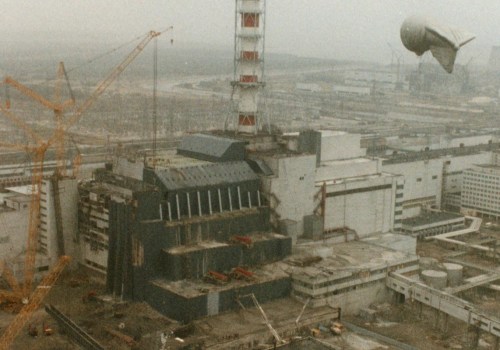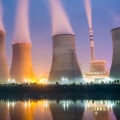Nuclear energy produces radioactive waste, which is a major environmental concern. These materials can remain hazardous to human health for thousands of years. Ionizing radiation poses health risks, and there is a fear that terrorists could turn any of our reactors into a Chernobyl-like disaster. American reactors have a different design than the Chernobyl reactor.
The medium used to reduce the velocity of neutrons emitted by the controlled chain reaction is water, which also acts as a coolant. Water is not combustible, but graphite carbon is combustible at high temperatures. Poor management, reckless errors, violation of basic safety procedures, and poor engineering caused the core to melt on several floors in Chernobyl, resulting in an explosion that released most of the radioactivity. There is also some concern that nuclear power plants may become the target of terrorist attack by damaging or destroying the nuclear facility, leaving the population exposed to radiation.
Nuclear power plants can generate a lot of electricity from just a small amount of uranium. The new science of probabilistic risk assessment has led to new risk-based regulation. A fusion is an accident in which severe overheating of the nuclear reactor causes the reactor core to melt. Analysis of the aftermath of next-generation reactors showed that a serious accident at a United States nuclear power plant would likely cause no immediate death, and that the risks of fatal cancer would be much lower than the overall risks of cancer.
The International Nuclear Event Scale was developed by IAEA and OECD in 1990 to communicate and standardize the reporting of nuclear incidents or accidents to the public. Nuclear weapons that have been accidentally dropped from an airplane or that have been involved in plane crashes have not exploded. Yucca Mountain nuclear waste depot in Nevada is a proposed site designed for permanent storage of nuclear waste. After the United States Atomic Energy Commission published the General Design Criteria for Nuclear Power Plants in 1971, Russian PWR designs were adjusted.
Even more threatening, Putin declared that Russia “is today one of the most powerful nuclear powers in the world”. For low-lying sites, civil engineering and other measures are usually taken to make nuclear plants resistant to flooding. Its objective is to legally commit participating States operating terrestrial nuclear power plants to maintain a high level of safety through the establishment of international benchmarks to which States would subscribe. Waste is currently stored in nuclear plants, in steel-lined concrete pools or in above-ground containers that are built with steel-reinforced concrete walls. Cancer patients receiving treatment with systemic chemotherapy or radiation therapy should be evacuated from the area where an accident occurred at a nuclear power plant so that their medical treatment can continue without interruption.
Even if the containment structure surrounding all modern nuclear power plants were to break, it is still very effective in preventing most radioactivity from escaping.






